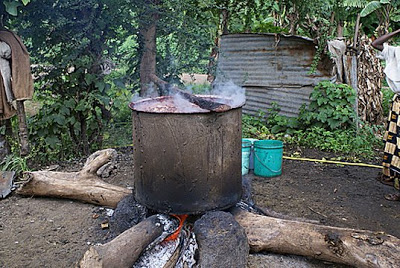By Dr Joel Msafiri Francis
Only a few studies from sub-Saharan Africa have investigated the alcohol concentration found in local brews and this has led to substantial uncertainty over the alcohol levels consumed by people who are fond of the locally brewed beer.
In Tanzania, we are aware of two studies that have estimated the level of alcohol in traditional alcoholic drinks—and this was done in selected parts of the country.
One was published in the year 2000 and titled: Traditional alcoholic beverages of Tanzania: Production, quality and changes in quality attributes during storage, while the other was carried out in Dar es Slaam as far back as 1991. It was titled:.. “Ingredients and contaminants of traditional alcoholic beverages in Tanzania.”
No study had been conducted in northern Tanzania though. So, we recently published a study in the Journal of Studies on Alcohol and Drugs,in an effort to close this information gap.
For research purposes, and for alcohol users, alcohol content (ethanol concentration) is crucial and this can be explained.
Whereas for the user, it helps him or her to understand the risk of consuming that type of alcohol and to gauge the amount that one should consume.
On the research side, it gives an opportunity to experts to quantify accurately the amount of alcohol intake and link it has with the associated health outcomes.
We went on the ground in the Northern part of the country and assessed samples of popular and locally produced beverages in Mwanza city-the second largest city in Tanzania, with a population of about 800,000, according to the National Bureau of Statistics, 2013.
We identified local traditional brew outlets through a mapping exercise, as we recorded down names of the local brews and the materials used for production of the available beverages.
During the research, the investigator purchased samples of each available beverage from seven randomly selected outlets in three urban wards of Mwanza.
We went ahead to analyse the samples as per internationally standardized method for the determination of ethanol concentration which is also recognized by Tanzania Bureau of Standards (TBS).
We found out that the traditional beers had ethanol concentrations ranging from 2 to 8 per cent by volume (v/v). Most of them had concentrations of above 4 per cent by volume (v/v) while the locally distilled spirits had the highest concentration-up to 55 v/v.
According to the World Health Organization’s 2014 report, the per capita consumption of alcohol in Tanzania is reported at 5L of pure alcohol (industrially produced) and approximately 2L from the traditional brews.
From our study, in fact 30 per cent of the total alcohol consumption in the traditional brews usually goes unrecorded. However, this 30 per cent that I am saying is an approximation—the figure could be higher than that.
A section of local media in Tanzania has covered the study in trying to raise awareness and alert the authorities for possible intervention. Read: Fresh alcohol warning
After this investigation, we can now assert that it is possible to quantify the amount of traditional brew consumed by an individual; for future planning of public health interventions.
Our findings were similar to those reported by the few other studies on traditional brews from other parts of Tanzania. But ideally, the study was very relevant to Mwanza where a few brews ( Kindi, Komoni and Waini) are widely used.
These are known to be processed in a similar way in other settings. For spirits and Mbege; these are widely used in many more parts of the country.
Due to funding limitations, we could not analyze the impact of aflatoxin and other impurities which could be are significant and very detrimental to the health of the consumers.
All in all traditional spirits are illegal; enforcement should continue but also look at ways to educate the producers and consumers on the dangers of consuming local brews in particular the spirits due to very high alcohol content and the potential for contaminants.
The author is a medical epidemiologist and holds medical degree from the University of Dar es Salaam, a Masters of Sc in Epidemiology from Harvard University, and a PhD in Epidemiology from the London School of Hygiene and Tropical Medicine. He is currently a Post-Doctoral Fellow at the department of Global Health and Population at the Harvard T.H. Chan School of Public Health, Harvard University, USA.

